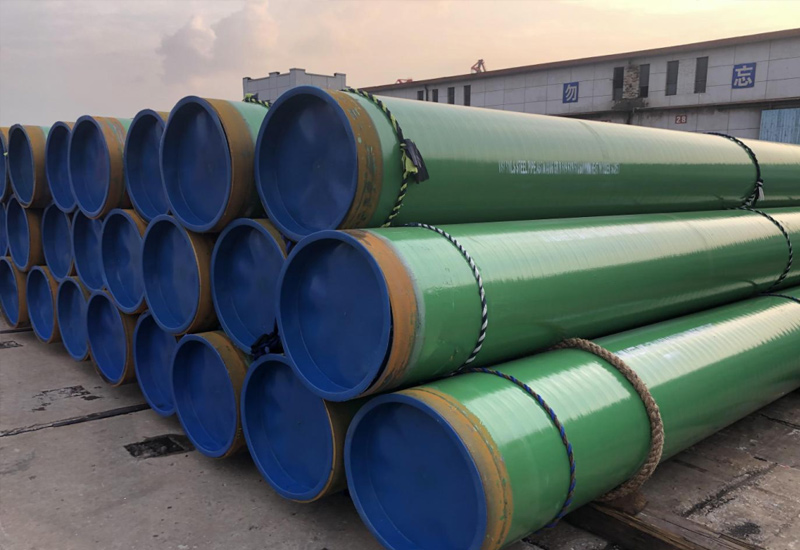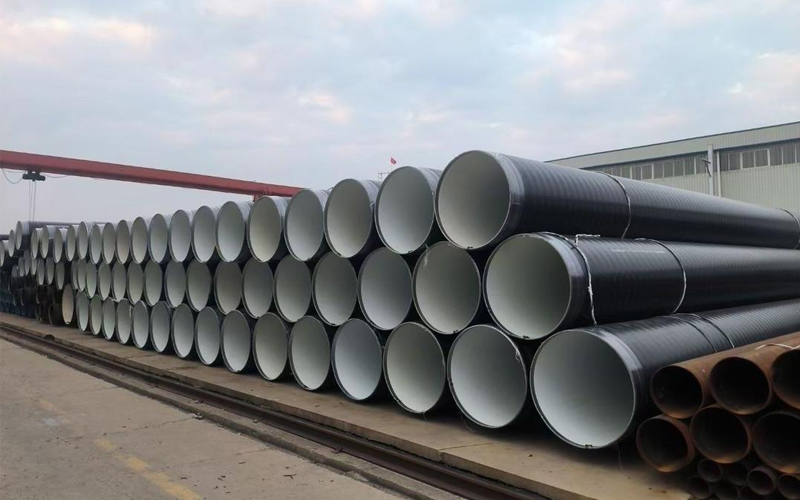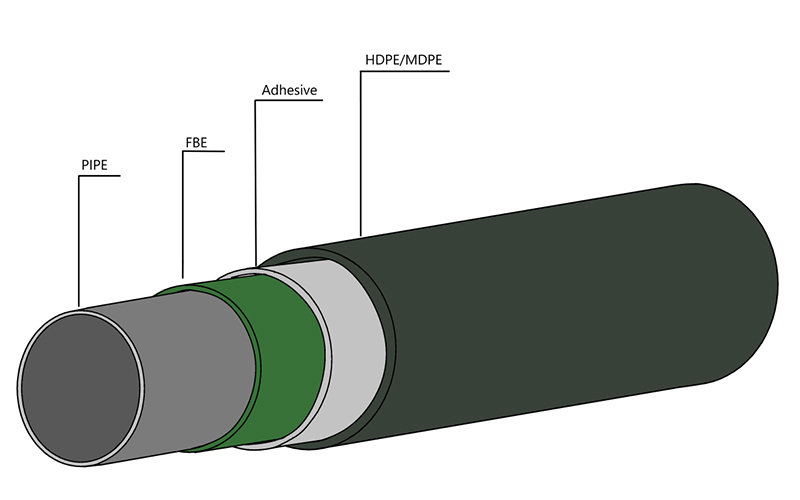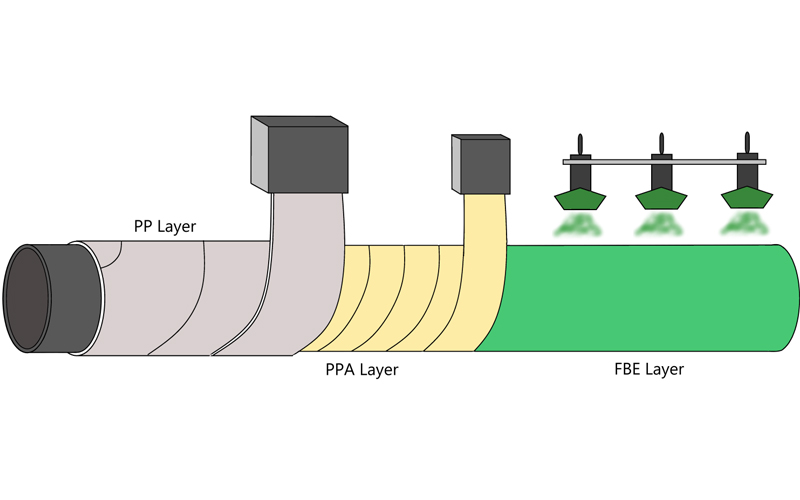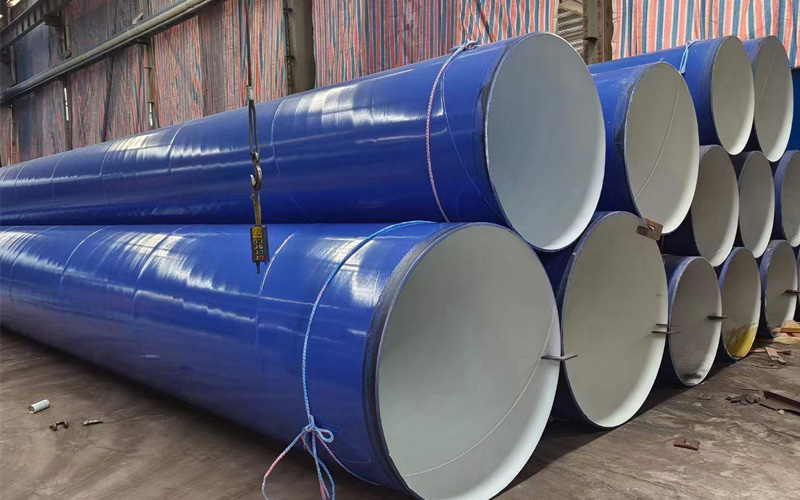LSAW Steel Pipe: 5 Key Specs for Buying
Introduction: A Checklist to Avoid Million-Dollar Procurement Mistakes
Sourcing the right LSAW steel pipe is a critical decision for any major engineering project. The complexity of specifications and technical parameters of LSAW steel pipes often makes buyers at a loss. A single parameter error can lead to disasters: choosing the wrong grade of steel for an oil pipeline may lead to leakage, pollution and huge losses; Incorrect size can lead to incompatibility of pipes, thus delaying projects and increasing the cost of re-purchase. In order to help you avoid these mistakes and simplify the procurement of LSAW steel pipe, this paper provides a “foolproof” list with 5 key technical parameters.
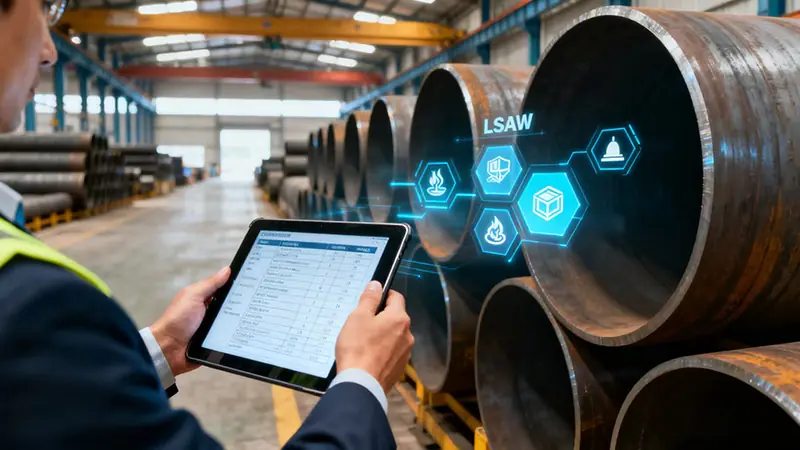
Parameter 1: Execution Standard – the “Legal Basis” of the Project
For the procurement of LSAW steel pipe, the implementation of standards is the fundamental quality assurance. They specify the material composition, mechanical properties, manufacturing technology, testing and inspection to ensure that the pipeline meets the project requirements. Two commonly used standards are API 5L and ASTM A252.
API 5L
API 5L is widely used in oil/natural gas pipelines, which stipulates the requirements for seamless/welded pipelines for transporting hydrocarbons. API 5L-compliant pipes resist high pressures and harsh environments (e. Underground corrosion).
ASTM A252
ASTM A252 is mainly used for steel pipe piles of buildings/bridges. It focuses on structural strength and toughness-the pipeline needs impact resistance to withstand piling and long-term loads.
Parameter 2: Steel Grade – the “Strength Level” of the Steel Pipe
The grade of LSAW steel pipe directly determines strength and is the key factor of engineering safety. Different grades have different minimum yield strength/tensile strengths, limiting pressure/load capacity.
API 5 l, for example, provides grades such as x 52 and x 65. In the API 5L standard, for example, grades like X52 and X65 are common. The “X” signifies its use for line pipe, and the subsequent number indicates the Minimum Yield Strength in “ksi” (kilopounds per square inch). So, X52 has a minimum yield strength of 52 ksi (approximately 360 MPa), and X65 has 65 ksi (approximately 450 MPa). This difference can affect applications.
In oil/gas pipelines, design pressure determines the selection of grades. The design pressure of 10 MPa may require x 65 (higher strength against pressure), while x 52 may be used for 6 MPa (reducing cost).
The selection of the grade also takes into account the working temperature, fluid type and environment. Cold areas need grades with good low temperature toughness to prevent brittle fracture.
Parameter 3: Dimension – the “Physical Parameters” of the Steel Pipe
The size of LSAW steel tube directly affects the performance, installation and cost. There are three core dimensions that need to be defined: OD, wall thickness and length.
Outer Diameter (OD)
The outer diameter determines the conveying capacity of the fluid. Larger outer diameter means a larger cross section and higher flow rate, which is very important for urban water supply projects.
Wall Thickness
Wall thickness, in combination with the outer diameter, determines the pressure bearing capacity. Thick walls can bear high pressures, which is an ideal choice for high-pressure oil and gas pipelines (to prevent expansion/rupture).
Length
The length of pipeline affects the workload and cost of on-site welding. Longer pipes mean fewer joints, thus reducing welding time and risks of defects.
Parameter 4: End Type – The Key to “Seamless Connection”
LSAW steel pipe end type determines on-site connection. The correct end ensures reliable connection, which is very important for pipeline operation. There are mainly two kinds: inclined end and flat end.
Bevel End
There is a chamfer (30-35 degrees) at the bevel end, which is convenient for welding. Welded joints have high strength and anti-leakage, and are ideal choices for oil/gas and water pipes. However, on-site welding requires skilled workers, special equipment and strict quality inspection.
Plain End
Flat end (straight cut without chamfer/thread) is suitable for flange or mechanical connections. Flange connections (sealed by bolts) is easy to install/disassemble, and suitable for chemical plants/power stations (frequent maintenance) Mechanical connections (e.g. Coupling) avoid welding, but it has low pressure bearing capacity and is suitable for low-voltage systems.
According to the connection requirements, operating conditions and environment, the ports are selected to avoid installation delay and extra expenses.
Parameter 5: Anti-Corrosion Coating – the “Protective Armor” of the Steel Pipe
LSAW steel pipes often face harsh environment (underground soil, corrosive gases). Corrosion will shorten the service life, leading to leakage and high maintenance costs. Anti-corrosion coating act as “protective armor”.
3 PE Coating
3 pE (Three-Layer Polyethylene) is widely used: inner epoxy powder (strong adhesion/corrosion resistance), middle adhesive (bonds layers), outer polyethylene (impact/abrasion resistance). It is suitable for underground, oil/gas and water pipelines, with a service life of 30-50 years and little maintenance.
FBE Coating
FBE (Fusion-Bonded Epoxy) is a single-layer epoxy coating fused to pipes via heating. It has good adhesive force, chemical resistance and smooth surface (reducing fluid friction). It is very suitable for high temperature/corrosive environment, but its impact resistance is low, so it is not suitable for pipelines with transportation/installation damage risk.
Summary and call for action
In order to avoid costly mistakes and ensure the success of the project, please clarify these 5 parameters before purchasing LSAW steel pipes.
Implementation standard: API 5 l (oil/natural gas) or ASTM A 252 (building pile) shall be selected according to the project needs.
· Steel Grade: API 5 L X 52/x 65 (or other) shall be selected according to design pressure, temperature and environment.
· Dimension: Define OD (flow capacity), wall thickness (pressure resistance), and length (welding cost).
· Type of end: Choose inclined end (welding) or flat end (flange/mechanical connections) for seamless connection.
· Anti-corrosion Coating: 3 PE (durability) or FBE (high temperature resistance) is adopted for anti.
Simplify the procurement of LSAW steel pipe according to this list and ensure the applicability of the pipes. Please contact our experts if you have any questions about the parameters of a specific project or professional purchasing suggestions. With many years of experience in LSAW industry, we provide free personalized consultation to help you make informed decisions. Partner with us to ensure your project is built on a foundation of quality and reliability. Contact us today!
Get Your Custom Steel Pipe Quote Today!
Provide us with your project details (like application, specifications, quantity). Our experienced team will respond with a tailored solution and competitive quote within 24 business hours.
Related Articles
ASTM A53 vs. API 5L: A Guide to Selection and Application
Introduction:Technology differences determine success or failure, and selection needs to be “precise”
Steel Density Analysis: Core Differences between Mild and Medium Carbon Steels and Industrial Applications
3LPE coated steel pipe: a solid barrier in the field of industrial corrosion protection
3LPP coated pipe: anti-corrosion guard in high temperature and high pressure environment
FBE steel pipe: the technological armor of the steel defense line
HOT TAGS
latest posts
- Introduction:Technology differences determine success or failure, and selection needs to be “precise”
- FBE Steel Pipes: Corrosion Protection Redefined
- DIN 30671: A Guide to FBE Coating for Steel Pipes
- A Guide to Structural Pipe: ASTM A500vsEN10219
- Weld Seam Integrity: A Deep Dive into LSAW vs. SSAW Pipe




